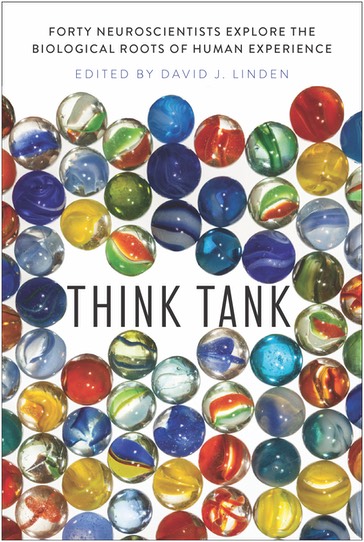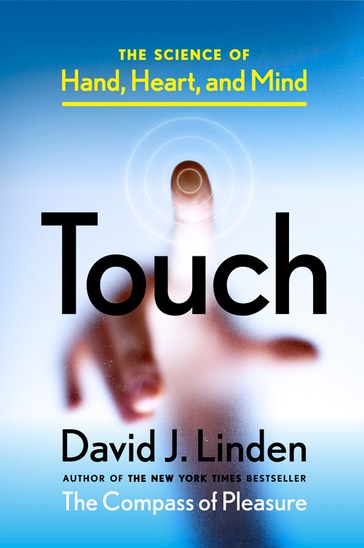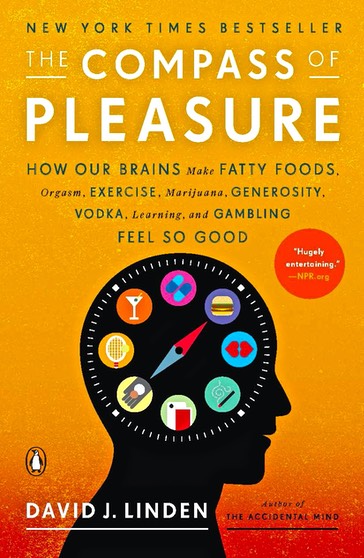When I was in the first grade, I attended an after-school program at the Jewish Community Center in my hometown of Santa Monica, Calif. In the lobby was a large banner soliciting donations to the United Jewish Appeal that read, “Give ‘Til It Hurts.”
I didn’t understand it and found the whole thing vaguely disturbing, to the point that, whenever possible, I would navigate around the lobby so as to avoid even looking at the banner.
Several months later it was replaced with a similar one—same font, same logo—that read, “Give ‘Til It Feels Good.”
Adults!, I thought. Why does everything have to be so confusing? Should giving be pleasurable orpainful?
That complicated and ambivalent relationship with giving is just a sign of all the other complicated ways humans pursue pleasure. Pleasure is a central motivator in our lives; after all, if we didn’t find things like food, water, and sex rewarding we would not survive and pass our genetic material to the next generation.
Furthermore, most experiences in our lives that we find transcendent—whether illicit vices or socially sanctioned ritual and social practices as diverse as exercise and meditation activate an anatomically and biochemically defined pleasure circuit in the brain. Orgasm, learning, highly caloric foods, gambling, prayer, dancing ’till you drop, and playing on the Internet: They all evoke neural signal that converge on a small group of interconnected brain areas called the “medial forebrain pleasure circuit” in which the neurotransmitter dopamine plays a crucial role. It is in these tiny clumps of neurons that human pleasure is felt. This dopamine-using pleasure circuitry can also be co-opted by some, but not all, psychoactive substances like cocaine, nicotine, heroin or alcohol.
That connection to pleasure I witnessed looking at the “Give Til It Feels Good” banners made more sense as I began to examine new development in brain research that might help us all better understand what motivates charitable giving.
One set of studies was conducted by William Harbaugh, a professor of economics, at the University of Oregon, and his colleagues. The goal of their study was to figure out how the brain’s pleasure circuit responded to differing approaches to giving and paying taxes.
One theory holds that some individuals give to charity out of altruism. They feel satisfaction from providing a public good, like assistance to the needy, and they care only about how much benefit is offered and not the process by which it occurs. This model implies that these individuals should get some pleasure even when such a transfer of wealth is mandatory, as in taxation.
A second theory, called “warm glow,” holds that people like making their own decision to give . They derive pleasure from the sense of agency, in much the same way that people highly prefer to roll their own dice while playing craps and pick their own lottery numbers. In this model, mandatory taxation is not expected to produce a “warm glow.”
A third theory proposes that some people take pleasure in charitable giving because of its enhancement of their social status . They enjoy being regarded as wealthy or generous by their peers. Of course, these theories are not mutually exclusive. Someone could be motivated by altruism and the warm glow of agency and the desire for social approval.
Dr. Harbaugh and his team designed their experiment to address the first two theories, but not the third. They recruited nineteen young women from the area around Eugene, Oregon, and had them perform various economic transactions in a brain scanner. They were instructed that no one, not even the experimenters, would know their choices. (This was true: Their decisions were written directly to computer disk and machine-coded prior to analysis.) Presumably, the design of this experiment removes enhancement of social status as a motivator. Each subject received $100 in an account, which would then be allocated in various amounts to a local food bank. In some of the trials, the subjects had the option to donate, in others they had no choice—they were “taxed.” In other trials, they received money with no conditions. The way the study was carried out was as follows: The subjects first were presented an amount of money on a video screen, say $15 or $30. A few seconds later, they learned the status of the trial: This sum was either a gift to them, an involuntary tax on their account, or an offer to donate to charity, which they could either accept or decline by pushing one of two buttons. The brain scanning results showed over the entire population that, just like receiving money, both taxation and charitable giving activated nearly overlapping regions of the pleasure circuit. However, on average, charitable giving produced a stronger activation of this pleasure center than did taxation. These results support both “pure altruism” and “warm glow” models as motivators of charitable giving.
Of course, this doesn’t mean that these same subjects are smiling as they write their checks to the IRS, which supports many programs that may be less appealing than a food bank. It also doesn’t mean that everyone’s brain responds precisely the same way in such conditions. About half of the subjects in the study had more pleasure center activation from receiving money than from giving it, while the other half showed the opposite results. Not surprisingly, those who got more pleasure from giving did indeed choose to give significantly more to charity than the other group.
A philosophical question arises from these findings: If giving—even mandatory, anonymous giving—activates the brain’s pleasure centers, does that mean that “pure altruism” doesn’t really exist? In other words, if we catch a pleasure buzz from our noblest instincts, does that make them less noble? It’s worth noting that motivations for prosocial behavior have been a topic of intense interest in many philosophical and religious traditions. Kant, for example, wrote that acts driven by feelings of sympathy were not truly altruistic, and were thereby undeserving of praise, because they made the actor feel good. And this is not just a chilly Northern European notion: A similar idea is found in the Buddhist concept of dana, or pure altruism, giving divorced from even internal reward, a key attribute of the enlightened Bodhisattva. Harbaugh’s experiments would suggest that utterly pure altruism, giving without pleasure, is a very unnatural and difficult thing to achieve.
So what does this mean in the real world, where social interactions and reputation are critical, as fund raisers seek to motivate people to give? All of our behavior is embedded in a social context, and this social context powerfully influences our feelings and decisions. Studies have shown that even mild social rejection can activate the emotional pain centers of the brain. Does this mean that positive social interactions can activate pleasure centers as well?
For that, it is useful to turn to a study by Norihiro Sadato and his coworkers at the National Institute of Physiological Sciences in Japan, who sought to figure out whether the brain got more pleasure from improving one’s social status and reputation – such as by generous charitable giving – or by receiving a lot of money that could be used any way a person wanted.
Subjects in a brain scanner chose one card of three on a video screen and received different sums. The strongest brain activations were produced by the largest monetary payouts.
When the same subjects returned for a second day of testing, they took an extensive written personality survey and recorded a short video interview. Then they entered the scanner, where they received social feedback in the form of evaluations of their personality that had supposedly been prepared by a panel of four male and four female observers.
To further the deception, they were shown photos of these observers and were told that they would meet them at the end of the experiment. The feedback took the form of a photo of the subject’s own face with a single-word descriptor underneath. Some of the descriptors were positive, such as “trustworthy” and “sincere,” while others were rather neutral, like “patient.” Of course, these descriptors were all generated by theexperimenters and presented in a randomized order.
The main finding was that the most positive social reward descriptors activated portions of the reward circuit—most notably the nucleus accumbens and the dorsal striatum—that substantially overlapped with those activated in the monetary reward task. This finding suggests that there is, quite literally, a common neural currency for social and monetary reward.
So what can we learn from all of this brain science? Don't worry about being a Bodhisattva- it’s OK to catch a pleasure buzz from an internal warm glow, a sense of agency or the approval of others- just give ‘til it feels good.



